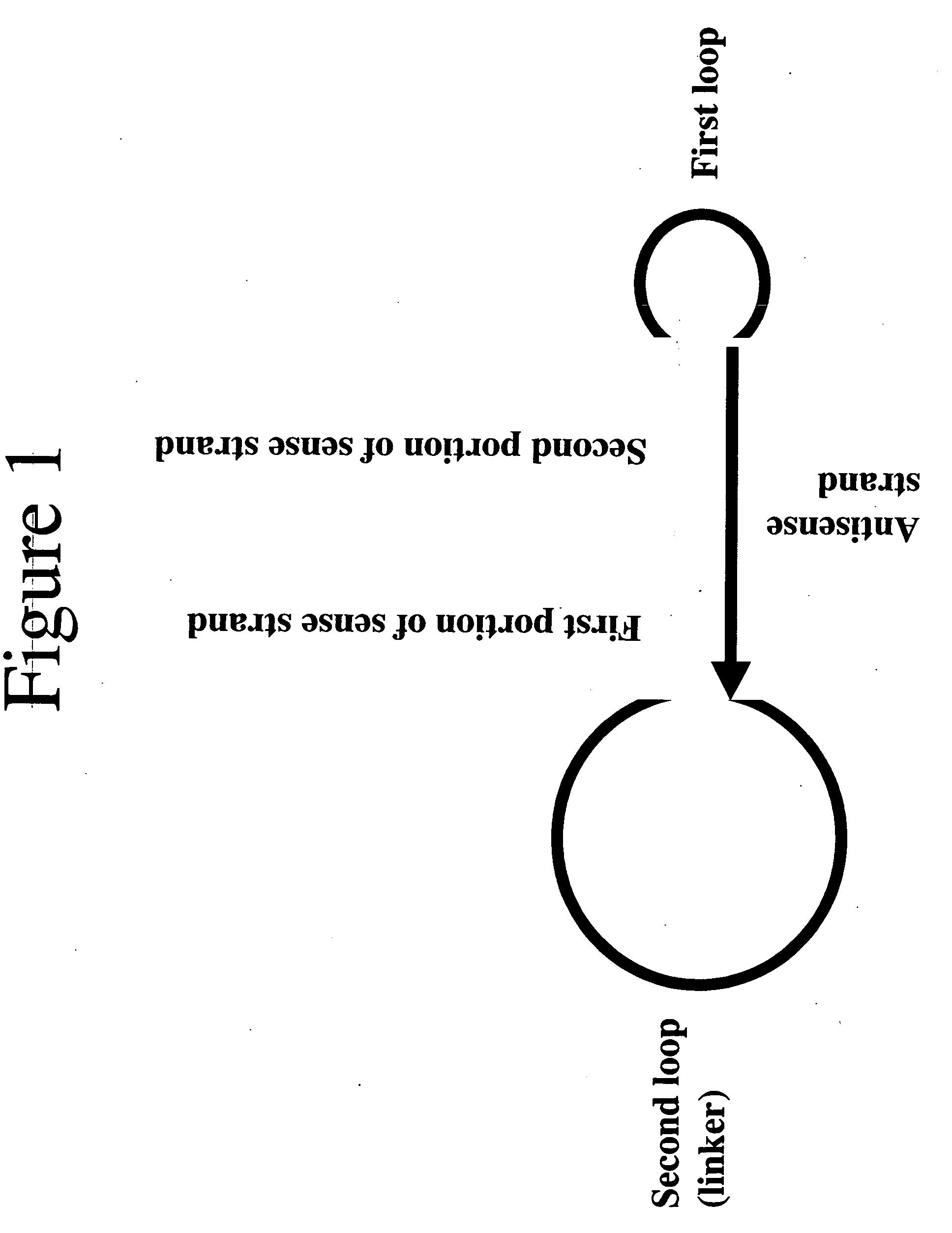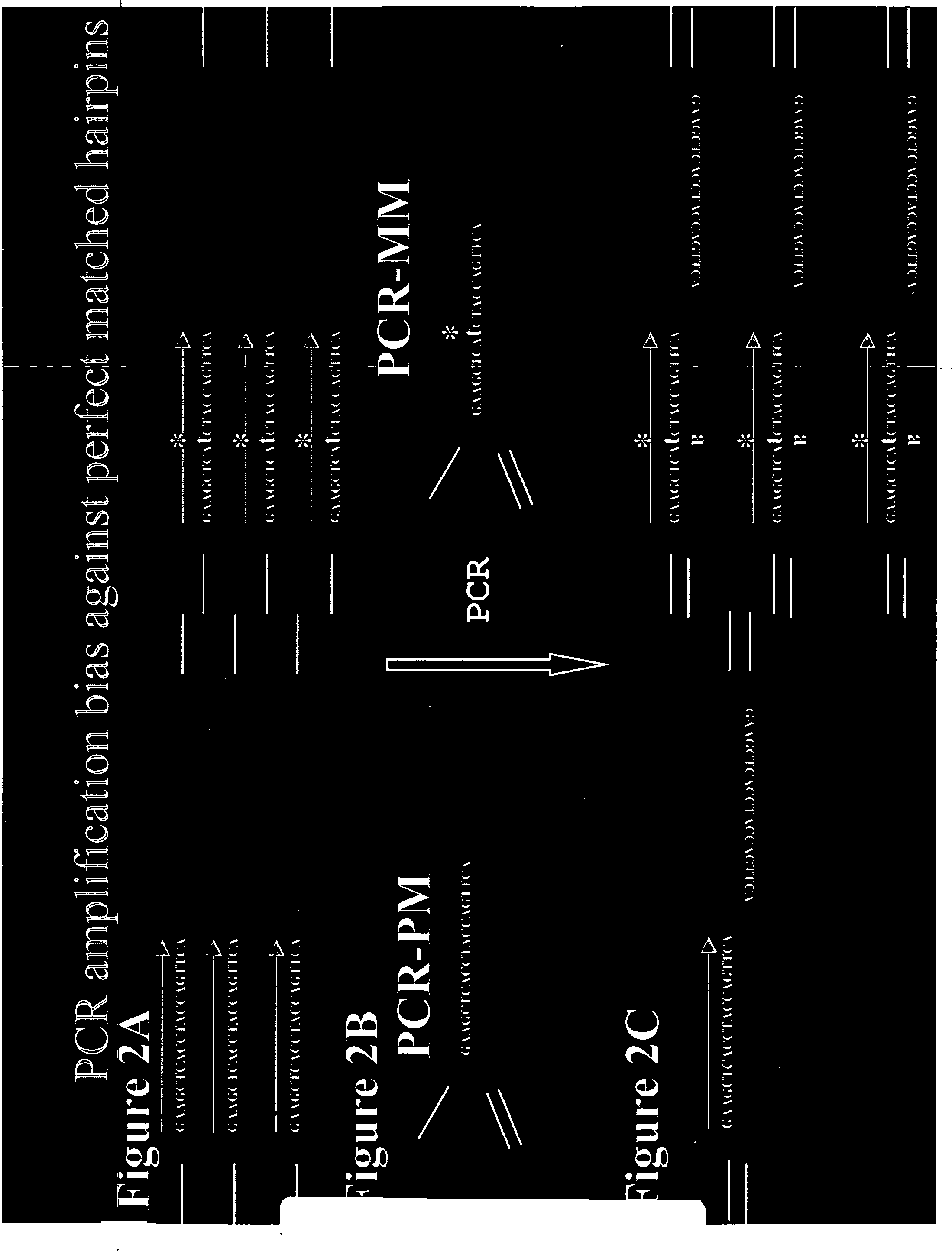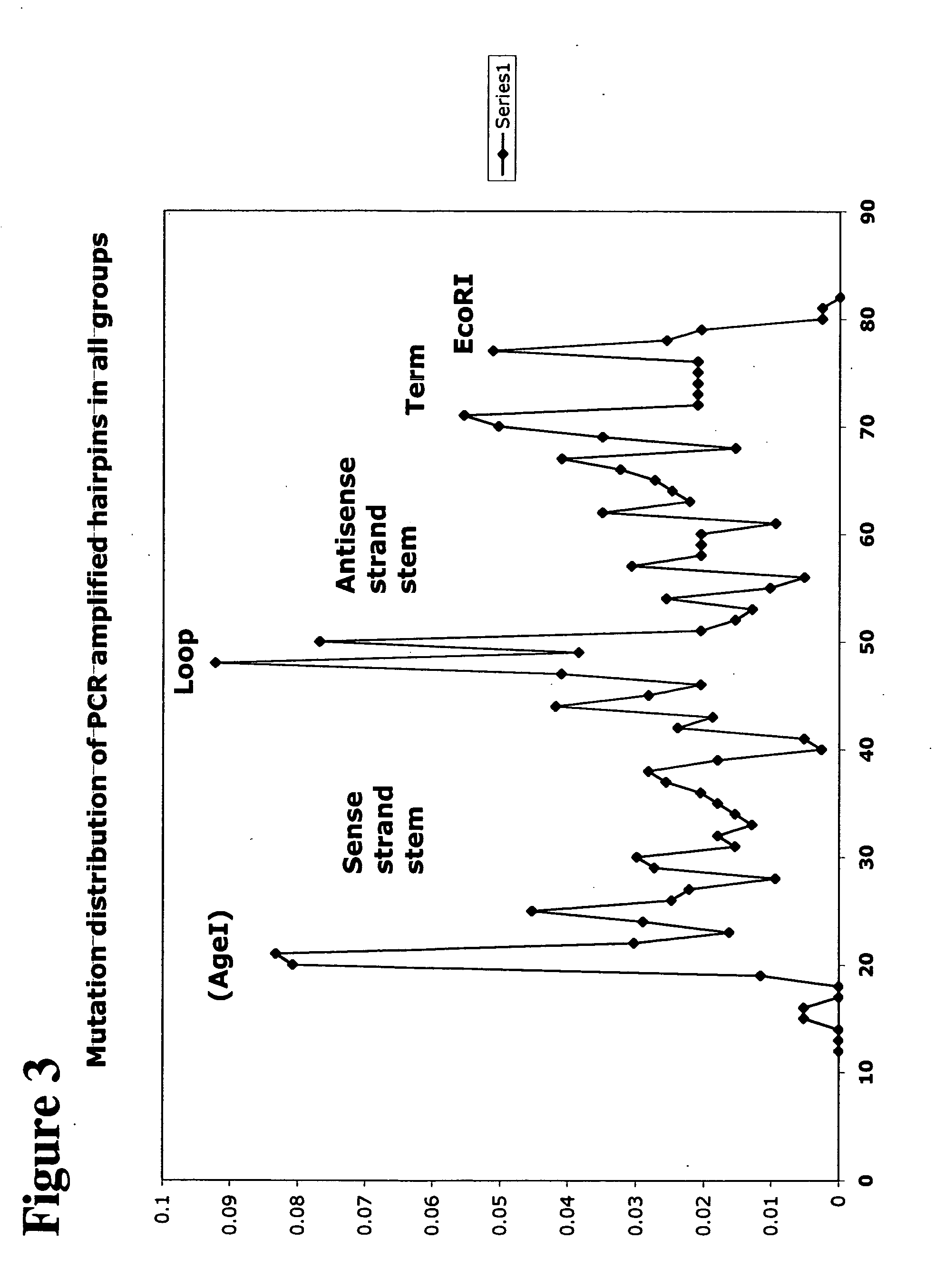Method of producing short hairpin library
a technology of short hairpins and libraries, applied in the field of short hairpin libraries, can solve the problems of low production efficiency and biased libraries, and achieve the effects of high processivity, superb strand displacement activity, and high fidelity
- Summary
- Abstract
- Description
- Claims
- Application Information
AI Technical Summary
Benefits of technology
Problems solved by technology
Method used
Image
Examples
example protocol
[0080] High temperature, error correction, hot-start ligation with Taq DNA ligase:
[0081] Note: Protocol is for the processing of 2 chips.
[0082] Material: [0083] Five 200 ul PCR tubes [0084] 2 tubes of Oligo mix (2 chips) [0085] dH2O water [0086] 10× Taq ligase buffer [0087] Taq DNA ligase (NEB)
[0088] 1. Label PCR tubes according to chip number, following A and B version. Label the fifth tube as ‘Blank Control’
[0089] 2. In 200 ul PCR tubes add the following: [0090] 34 ul dH2O [0091] 1.5 ul from fresh tube of 10× Taq ligase buffer [0092] 12.5 ul Oligo Mix [0093] Note: For the ‘Blank Control’ tube, add 12.5 ul of dH2O instead of Oligo Mix and process as normal.
[0094] 3. Place all tubes on PCR machine and run: [0095] 95 C for 5 minutes [0096] 60 C for at least 10 minutes
[0097] 4. With tubes on PCR, add the following: [0098] 3.5 ul 10× Taq ligase buffer [0099] 3 ul Taq DNA ligase (NEB)
[0100] 5. Mix by pippeting 20 ul up and down 3 times
[0101] 6. Incubate at 60 C for 3 hours
[0102]...
PUM
| Property | Measurement | Unit |
|---|---|---|
| temperature | aaaaa | aaaaa |
| temperature | aaaaa | aaaaa |
| temperature | aaaaa | aaaaa |
Abstract
Description
Claims
Application Information
 Login to View More
Login to View More - R&D
- Intellectual Property
- Life Sciences
- Materials
- Tech Scout
- Unparalleled Data Quality
- Higher Quality Content
- 60% Fewer Hallucinations
Browse by: Latest US Patents, China's latest patents, Technical Efficacy Thesaurus, Application Domain, Technology Topic, Popular Technical Reports.
© 2025 PatSnap. All rights reserved.Legal|Privacy policy|Modern Slavery Act Transparency Statement|Sitemap|About US| Contact US: help@patsnap.com



